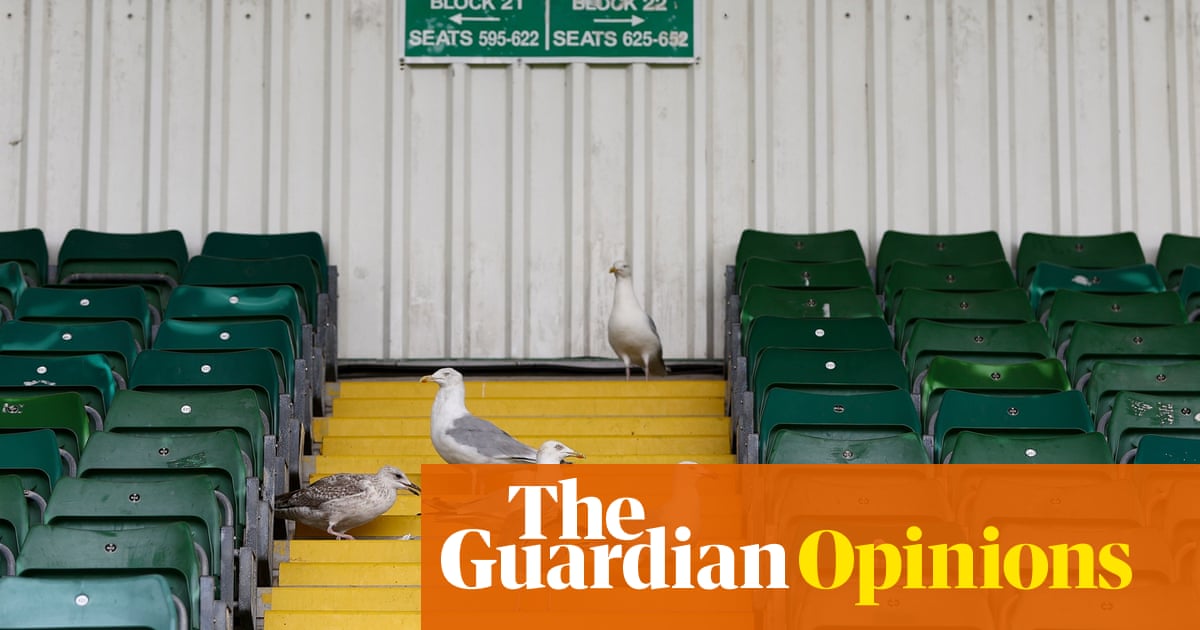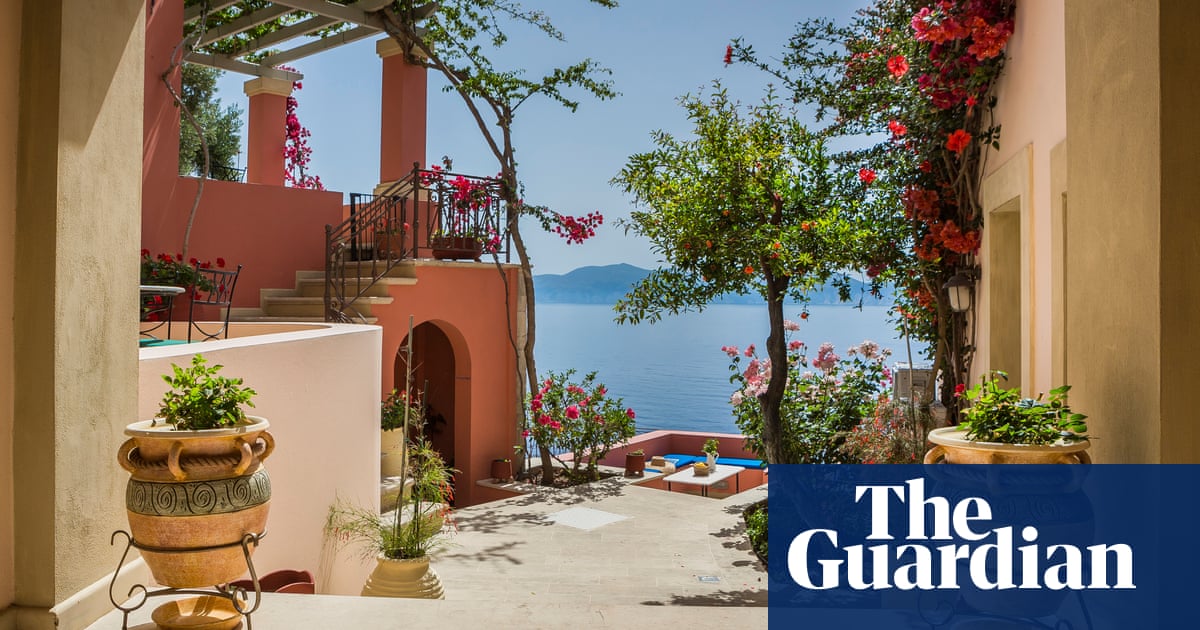
Iused to hear sparrows, starlings, wood pigeons and robins. Now, summer’s small hours are dominated by a chorus fit for a seafarer: herring gulls mostly, narrating the day from their urban stoops. “Oh, how lovely!”, wistful colleagues say. “I feel like I’m at the seaside during a call with you.” And yet, I am not at the seaside. I am in Exeter city centre, 10 miles from the coast.
Our relationship with gulls is complicated. From Viking superstition to British Vogue’s latest cover, these seabirds have long been allied with truth, cunning, good fortune and endurance, while simultaneously being regarded as the ultimate urban antagonist.
Their colonising of inland territories is nothing new. Predator-free rooftops have tempted both herring and the lesser known black-backed gulls to nest since the 1940s. Since 1945, UK coastal habitat has reduced by 16% and by up to 20% in England. For these birds, life today is lacking salt, spray and tides, but a gull’s ability to relocate has proved highly advantageous: 75% of the UK herring gull population now resides in urban areas; and, unnervingly, they appear here to stay.
As opportunistic feeders, gulls recognise the inland buffet as plentiful, varied and unbelievably accessible – much to the public’s dismay. Such preferences probably boomed after the 1956 Clean Air Act, when the banning of landfill waste-burning greatly increased the available organic material, which made for easy pickings.
In the wild, gulls rely heavily on theft for a meal. Kleptoparasitism, or food piracy, is deployed by many seabirds to exploit the foraging efforts of another. A gull stealing food on a rocky shore is simply part of the rental agreement within a functioning, biodiverse habitat.
But in the city? The instinct persists, though its recipients are wildly alien. Bin bags are ripped open by the same bill that should rip open a crab. Flustered cafe staff live and breathe the “fight or flight” realities of alfresco dining. Postures stoop in fierce protection of lunch. Waste is strewn across the street.
In these moments I forget herring gulls remain a red-listed seabird – a bird of “conservation concern”. Twice, I have had an adult gull collide with my head on Exeter Cathedral green, seemingly blinded by a frenzy of feeding opportunity. It hurt so much; I was knocked sideways, my own vision blurred. But if driven by life’s survival instincts of “where can I live safely?” and “what can I eat?”, what would you do? Was the gull invading my space, or I theirs?
The proliferation of gulls is an illusion of conservation success. Huge numbers of this seabird residing inland tells us that something is desperately wrong. For a start, the UK’s coastal water quality ranks among the worst in Europe. Centuries of commercial fishing practices have stripped away more than 90% of bottom-living fish populations around England and Wales. Studies measured a 34% rise in shipping traffic in the north-east Atlantic in the last five years. During the same period, vessel movements in marine protected areas have increased by 73%.
I think of bird flu, sprinting through UK seabird colonies with terrifying, deadly speed. The government had been due to publish a seabird conservation strategy in 2020, outlining an action plan to address this spiralling outbreak. During this delay of almost three years, the virus has killed tens of thousands of seabirds.
Perhaps wheels would turn if we framed urban gulls as a public health issue. If I were an influenza A H5N1 virus, hiding in a herring gull that was eyeing up a handheld baguette, I might take that theoretical transmission opportunity seriously.
In 2017, during a House of Commons debate on seagulls’ growing presence in coastal towns and cities, the seabirds were described as a “menace”, likened to a plague. Against a backdrop of our fragmenting natural environment, we are labelling vital ecological indicators as a disease themselves – something to eradicate, not investigate and diagnose.
The simplest, most effective gull deterrent is reducing food availability, but, as ever, there is only so much that the individual can do. Will there be a day when generations of gulls (which live for an average of 12 years) that have been so richly accommodated for in the urban landscape return to coastal settings? Little to no evidence suggests this could be the case, which raises the question: how will a diet of processed meat, dairy and plastic scavenged from urban settings alter their physiology, fecundity and behaviour?
This gull feud is our misunderstanding. To us, their cry is incessant and conspicuous. To the sea, its ancient, fine-tuned pitch carries messages above surging swells. The roar of the open ocean is the intended arena, but somehow we allowed it to fall silent. We shut the window to a gull’s song and remain deaf to their alarm.
Sophie Pavelle is a writer and science communicator












